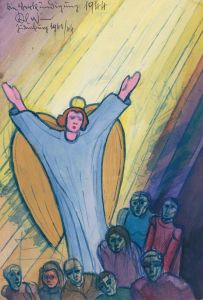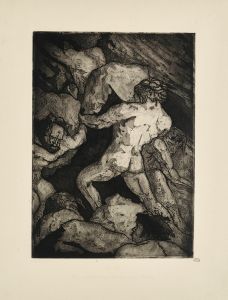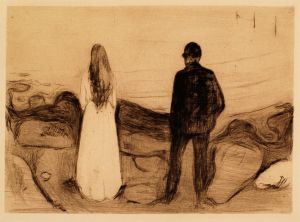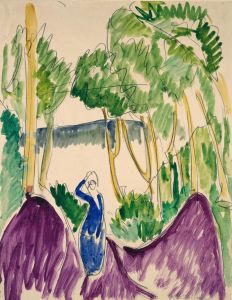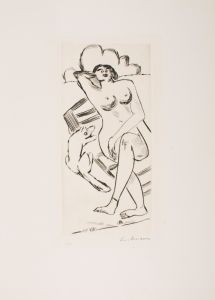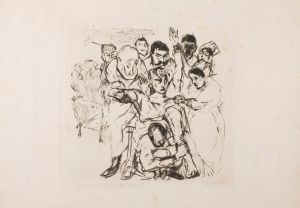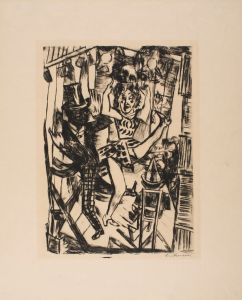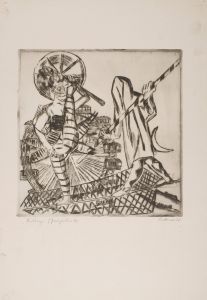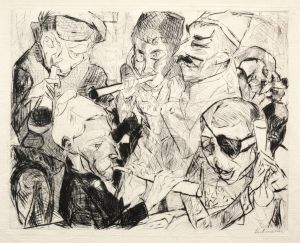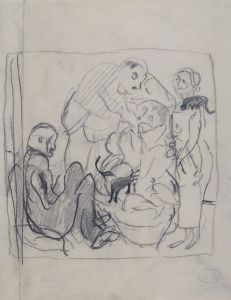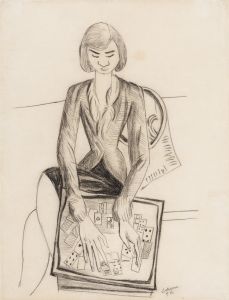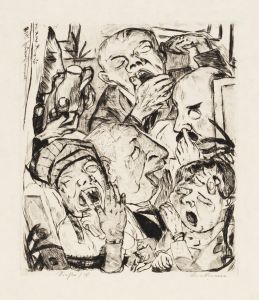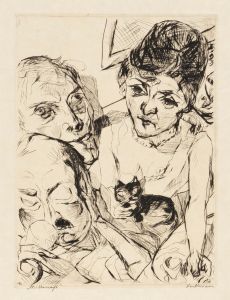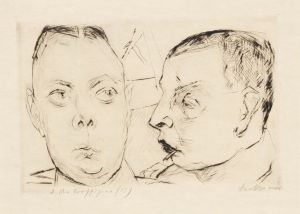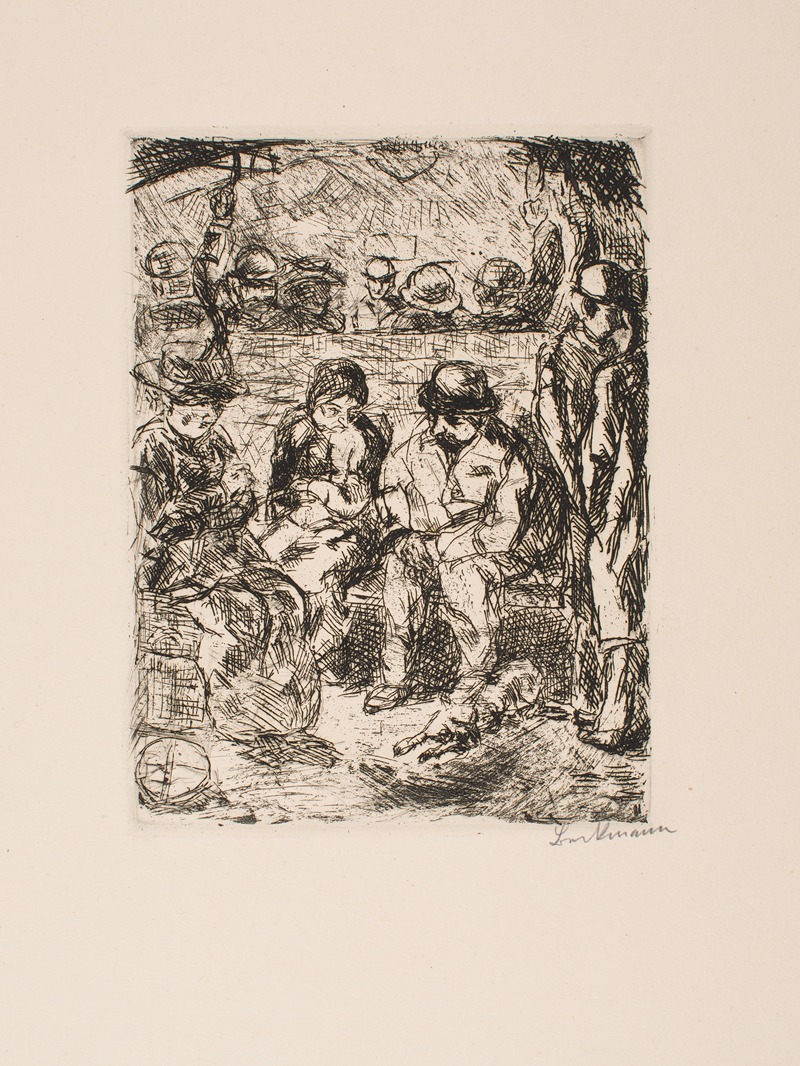
Fourth Class II
A hand-painted replica of Max Beckmann’s masterpiece Fourth Class II, meticulously crafted by professional artists to capture the true essence of the original. Each piece is created with museum-quality canvas and rare mineral pigments, carefully painted by experienced artists with delicate brushstrokes and rich, layered colors to perfectly recreate the texture of the original artwork. Unlike machine-printed reproductions, this hand-painted version brings the painting to life, infused with the artist’s emotions and skill in every stroke. Whether for personal collection or home decoration, it instantly elevates the artistic atmosphere of any space.
Max Beckmann's "Fourth Class II" is an intriguing work by the German painter, who is renowned for his contributions to the Expressionist movement. Beckmann, born in 1884, experienced the tumultuous events of the early 20th century, which significantly influenced his artistic style and thematic choices. His works often reflect the complexities and anxieties of the modern world, and "Fourth Class II" is no exception.
Painted in 1929, "Fourth Class II" is part of Beckmann's exploration of the human condition and societal structures. This period in Beckmann's career is marked by a shift from his earlier, more traditional styles to a more personal and symbolic approach. The painting is characterized by its bold use of color and form, typical of Beckmann's mature style, which often features distorted figures and complex compositions.
"Fourth Class II" depicts a scene that is both crowded and intimate, capturing a moment in a public setting, likely a train or a similar mode of transportation. The title itself suggests a focus on the lower echelons of society, as "fourth class" refers to the least expensive and most crowded section of travel accommodations during that era. Beckmann's choice to highlight this aspect of society reflects his interest in the lives of ordinary people and the social dynamics of his time.
The composition of "Fourth Class II" is dense and dynamic, with figures overlapping and interacting in a confined space. Beckmann's use of strong lines and contrasting colors creates a sense of tension and movement, drawing the viewer into the scene. The figures are rendered in a manner that is both realistic and abstract, a hallmark of Beckmann's style, which often blurs the line between representation and symbolism.
Beckmann's work is known for its psychological depth, and "Fourth Class II" is no exception. The expressions and postures of the figures suggest a range of emotions, from contemplation to anxiety, capturing the complex interplay of human interactions in a crowded environment. This focus on the psychological aspects of his subjects is a key element of Beckmann's art, reflecting his interest in the inner lives of individuals.
The painting also reflects the broader social and economic context of the Weimar Republic, a period of significant upheaval and change in Germany. The depiction of ordinary people in a public setting can be seen as a commentary on the social conditions of the time, highlighting issues of class and the human experience in a rapidly changing world.
Max Beckmann's "Fourth Class II" is a powerful example of his ability to convey the complexities of modern life through his unique artistic vision. The painting remains an important work in the study of early 20th-century art, offering insights into both the personal and societal themes that Beckmann explored throughout his career.





